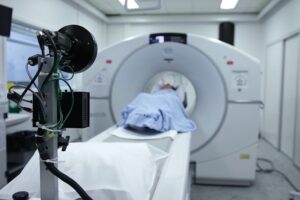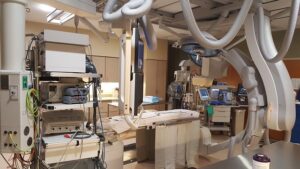Understanding the Berlin Definition of ARDS
Understanding the Berlin Definition of ARDS
Acute Respiratory Distress Syndrome (ARDS) is a life-threatening condition characterized by acute inflammation and fluid accumulation in the alveoli of the lungs, leading to severe respiratory failure. Despite its grave implications, ARDS remains a relatively obscure condition, generating anxiety and confusion for patients and their families. The urgency surrounding this condition necessitates an in-depth understanding of its definitions, particularly the Berlin Definition, which has been pivotal in standardizing the diagnosis and classification of ARDS.
The Berlin Definition was established during the Berlin Symposium on ARDS in 2011 and has since become the cornerstone for clinical and research settings. This classification simplifies the diagnosis of ARDS into three distinct categories—mild, moderate, and severe—based on the degree of hypoxemia and clinical presentation. Understanding the Berlin Definition is essential not only for healthcare professionals but also for patients and their families who are navigating the complexities of ARDS.
In the following sections, we will break down the Berlin Definition, its clinical significance, diagnostic criteria, and implications for treatment and research. Additionally, we will address common questions and provide resources for those affected by ARDS.
The Importance of Defining ARDS
The Berlin Definition serves multiple vital purposes in the clinical landscape of ARDS. First and foremost, it enhances clarity in diagnosis, thereby aiding clinicians in making informed treatment decisions. The lack of standardization prior to the Berlin Definition often led to discrepancies in diagnosing severity and, consequently, discrepancies in treatment approaches.
Furthermore, the Berlin Definition provides a framework for clinical trials and research efforts aimed at developing new therapies and interventions for ARDS. By categorizing patients into specific groups based on severity, researchers can better tailor their studies and interpret outcomes more effectively. This has overarching implications for advancing our understanding of ARDS and improving patient care.
- Provides clarity in diagnosis and treatment decisions.
- Aids in the stratification of patients in clinical trials.
- Facilitates better communication between healthcare teams.
Classification of ARDS: The Three Phases
The Berlin Definition classifies ARDS into three distinct categories based on the degree of hypoxemia—defined as decreased oxygen levels in the blood. This classification helps inform the clinical approach to each patient.
1. Mild ARDS: This category is characterized by a PaO2/FiO2 ratio (the partial pressure of arterial oxygen to the fraction of inspired oxygen) of >200 to ≤300 mmHg. In practical terms, this means the patient may show mild symptoms of respiratory distress but can still respond relatively well to supplemental oxygen.
2. Moderate ARDS: Here, the PaO2/FiO2 ratio falls between >100 to ≤200 mmHg. Patients with moderate ARDS may require more intensive forms of respiratory support as their ability to oxygenate blood diminishes.
3. Severe ARDS: This category is defined by a PaO2/FiO2 ratio of ≤100 mmHg. Patients in this group often present with marked respiratory distress and require advanced supportive therapies, including mechanical ventilation and other interventions.
- Understanding the hypoxemia levels provides insights into patient needs.
- Helps healthcare providers determine appropriate interventions.
- Establishes a framework for discussing prognosis with family members.
Diagnostic Criteria of ARDS
To diagnose ARDS, healthcare professionals must adhere to specific criteria as outlined in the Berlin Definition. These criteria include the following:
- Timing: Symptoms must onset within one week of a known clinical insult or new/worsening respiratory symptoms.
- Chest Imaging: Bilateral opacities must be present on chest X-ray or CT scan, not fully explained by effusions, lobar/lung collapse, or nodules.
- Origin of Edema: The respiratory failure must not be fully explained by cardiac failure or fluid overload; objective evidence must confirm this.
- Hypoxemia: The aforementioned classifications of mild, moderate, or severe based on PaO2/FiO2 ratios.
Understanding the necessity of these criteria empowers patients and their families to ask informed questions regarding the diagnosis and management of ARDS. Clarity in these diagnostic processes is crucial as it sets the stage for potential interventions and the patient’s journey toward recovery.
- Consider gathering a list of potential questions to ask your healthcare provider after an ARDS diagnosis.
- Document symptom onset and medical history for better context during your medical evaluations.
- Seek clarification about imaging and monitoring practices to stay engaged with the care process.
Pathophysiology of ARDS
Understanding the underlying mechanisms guiding ARDS is necessary for both patients and healthcare professionals. At its core, ARDS results from a variety of direct and indirect insults to the lung, leading to an inflammatory response. Causes can range from pneumonia, sepsis, and trauma to aspiration and toxic inhalation.
In ARDS, the damage to the alveolar-capillary membrane increases its permeability, allowing fluid to leak from pulmonary capillaries into the alveoli, resulting in pulmonary edema. This impairs gas exchange and can cause acute respiratory failure. The inflammatory response also results in the release of cytokines, further contributing to lung injury and systemic implications.
The pathophysiology can be divided into three phases:
- Exudative Phase: This phase typically lasts from 0 to 7 days following injury. Inflammatory cells infiltrate the lungs, leading to increased edema and damaged alveolar cells.
- Proliferative Phase: Occurring from approximately 1 to 3 weeks after the injury, this phase is characterized by the proliferation of type II alveolar cells and the formation of a hyaline membrane. Repair processes are initiated.
- Fibrotic Phase: If ARDS persists beyond 3 weeks, some patients may enter this phase where fibrous scar tissue formation can lead to permanent lung dysfunction.
Knowledge of these phases is crucial as they inform treatment strategies and help gauge the potential for recovery. Treatments targeting inflammation, such as corticosteroids, and supportive strategies to optimize oxygenation aim to mitigate the impending lung damage.
- Regular follow-ups for monitoring lung function post-recovery.
- Understanding the potential for long-term complications arising from ARDS.
- Awareness of experimental therapies that may benefit patients, especially during the exudative phase.
Treatment Approaches for ARDS
Management strategies for ARDS are informed by the severity of the condition and the patient’s overall health status. The management prioritizes improving oxygenation and providing supportive care, with a focus on addressing the underlying cause.
Common treatment modalities include:
- Mechanical Ventilation: Often necessary in moderate to severe ARDS, mechanical ventilation strategies aim to provide adequate oxygenation while minimizing further lung injury (lung-protective ventilation strategies).
- Fluid Management: Careful management of fluid intake is essential given the pulmonary edema characteristic of ARDS. A balance must be struck to avoid fluid overload while maintaining adequate perfusion.
- Corticosteroids: Administering corticosteroids has gained traction as they help reduce inflammation. Studies have shown significant benefits in reducing mortality rates in patients diagnosed with severe ARDS.
- Antibiotic Therapy: For ARDS attributed to infectious causes, appropriate antibiotics are critical to managing the underlying infection, such as pneumonia or sepsis.
- Prone Positioning: Positional therapy can optimize ventilation-perfusion matching in patients, particularly those on mechanical ventilation.
Each patient’s treatment plan varies based on the individual assessment and ongoing monitoring of their respiratory status. Understanding the available treatment options can provide reassurance to patients and guide them in discussions with their healthcare team.
- Discuss any concerns or preferences regarding treatment options with healthcare providers.
- Stay informed about ongoing clinical trials and novel therapies that may emerge in ARDS management.
- Education on respiratory care strategies can empower patients during their recovery.
FAQs about ARDS
Patients and their families often have similar questions when faced with an ARDS diagnosis. Here are some frequently asked questions along with comprehensive answers:
- What causes ARDS?
ARDS can result from numerous conditions, including pneumonia, sepsis, aspiration of stomach contents, trauma, and systemic inflammatory responses. - Is ARDS reversible?
Many patients can recover fully from ARDS, but the outcomes depend on the severity of the condition, the presence of underlying diseases, and the timely initiation of treatment. - What are the long-term effects of ARDS?
Some individuals experience long-term issues such as reduced lung capacity, physical weakness, and psychological effects. Early rehabilitation can help restore function. - How can families support patients with ARDS?
Family support involves understanding the condition, being engaged in treatment discussions, encouraging rehabilitation efforts, and providing emotional support.
Taking the time to answer these questions can alleviate some anxiety surrounding an ARDS diagnosis while fostering a collaborative healthcare relationship.
Conclusion
The Berlin Definition of ARDS provides a much-needed framework for understanding this life-altering condition. It allows for clarity in diagnosis, enhances collaborative approaches to treatment, and serves as a foundation for advancing research efforts. While ARDS remains a daunting diagnosis for patients and families, understanding its classifications, pathophysiology, and treatment strategies can empower individuals to better navigate their healthcare journey. Engaging actively in discussions with healthcare teams and utilizing available resources can establish a path to recovery and ultimately improve outcomes. Awareness of ARDS and its implications can foster hope and provide a clearer picture of the road ahead.
For more detailed information and updates about ARDS, consider visiting reputable medical resources such as the American Thoracic Society and the National Institutes of Health. Staying informed and connected to healthcare providers is the best strategy for managing this complex condition.
About ARDS and Post-ARDS
ARDS (Acute Respiratory Distress Syndrome) is a life-threatening condition typically treated in an Intensive Care Unit (ICU). While ARDS itself is addressed during the ICU stay, recovery doesn’t end with discharge; patients then embark on a journey of healing from the effects of having had ARDS.
Disclaimer
The information provided in ARDS Alliance articles is for general informational and educational purposes only and is not a substitute for professional medical advice, diagnosis, or treatment. While we strive to present accurate, current information, the field of Acute Respiratory Distress Syndrome (ARDS) and related healthcare practices evolve rapidly, and ARDS Alliance makes no guarantee regarding the completeness, reliability, or suitability of the content.
Always seek the advice of qualified healthcare professionals with any questions you may have regarding a medical condition. Never disregard professional medical advice or delay seeking it because of information you read in ARDS Alliance articles. ARDS Alliance, its authors, contributors, and partners are not liable for any decision made or action taken based on the information provided in these articles.
About ARDS Alliance
Our mission is to improve the quality of life for ALL those affected by ARDS.
The ARDS Alliance is a non-profit committed to raising awareness and enhancing the understanding of Acute Respiratory Distress Syndrome (ARDS), a severe lung condition often occurring in critically ill patients. Through developing alliances, it unites various organizations and experts striving to improve care and support research aimed at finding more effective treatments. Their efforts include educating the public and healthcare providers about ARDS symptoms, risk factors, and advancements in treatment, ensuring better patient outcomes and resource availability.

I believe that raising awareness about Acute Respiratory Distress Syndrome is crucial in improving patient outcomes. Our organization works tirelessly to educate the public about the signs and symptoms of ARDS, and provide support to those affected by this life-threatening condition. Together, we can make a difference in the fight against ARDS.
~ Paula Blonski
President, ARDS Alliance






